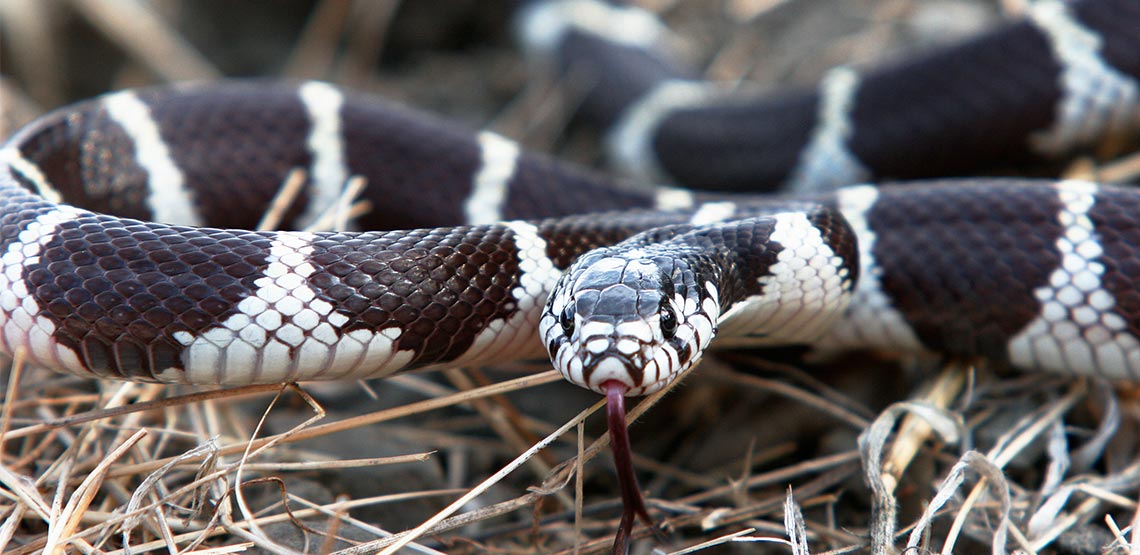A Guide to Owning a King Snake
There couldn't be a more fitting name than king snake for the breed that is known to eat other snakes and that has immunity to venom from coral snakes, rattlesnakes and others. Still, king snakes are one of the most popular snake breeds for pets because they are easy to care for and are adaptable to a variety of living situations.
Origins and Natural Habitat
Different types of king snakes can be found from southern Canada to northern South America, some of which are named for their area of origin (for example, the Florida king snake or the California king snake).
In the wild, king snakes can live in a number of habitats, from wetlands to shrublands. They typically seek shelter in rocks, logs or heavy vegetation. Though they are primarily a land snake, they are known to swim in ponds and streams.
Appearance and Characteristics
Size: The average size of a king snake is between 2 and 5 feet long.
Markings: Along with geographical naming, many King snake breeds are named for their coloring. Common types include the:
- Scarlet king snake, which is predominantly red with black and white rings.
- Speckled king snake, which has a pattern of off-white speckles on a black or grey background.
- Black king snake, which is entirely black in color.
You May Also Like:
Related Search Topics (Ads):
Behavior
In the wild, king snakes hunt using constriction. They are nocturnal and tend to stay hidden during the day.
As pets, king snakes are still likely to be more active during the night. Overall, this is a docile breed, though young king snakes are more prone to biting.
Health and Care
Feeding: King snakes typically eat thawed frozen mice. Baby king snakes will typically eat once or twice a week and should only be fed pink (or baby) mice. Adult king snakes may only need to be fed once a week or less and can be fed adult mice.
Housing: King snakes should typically be kept in an aquarium that is at minimum 20 gallons, and they should always be housed alone. The tank should be heated to a range of 75 to 85 degrees Fahrenheit, and a shelter, rock or branch and water bowl should be included.
Health Concerns: The primary health issues for king snakes (and most other snakes) are parasites and shedding problems. A clean, sterile cage can help eliminate a mite problem, while adequate moisture in the tank can usually aid in the shedding process. A snake care sheet found online or in a pet store can be helpful in learning more about shedding.
Life Expectancy: On average, king snakes live between 15 and 20 years.
Finding King Snakes for Sale
Because of the variety in their coloring and their striking look, king snakes are often a little more expensive than other breeds of snakes. Full-grown king snakes can cost anywhere from $200 to $400, while baby king snakes usually start around $70 or $80.

